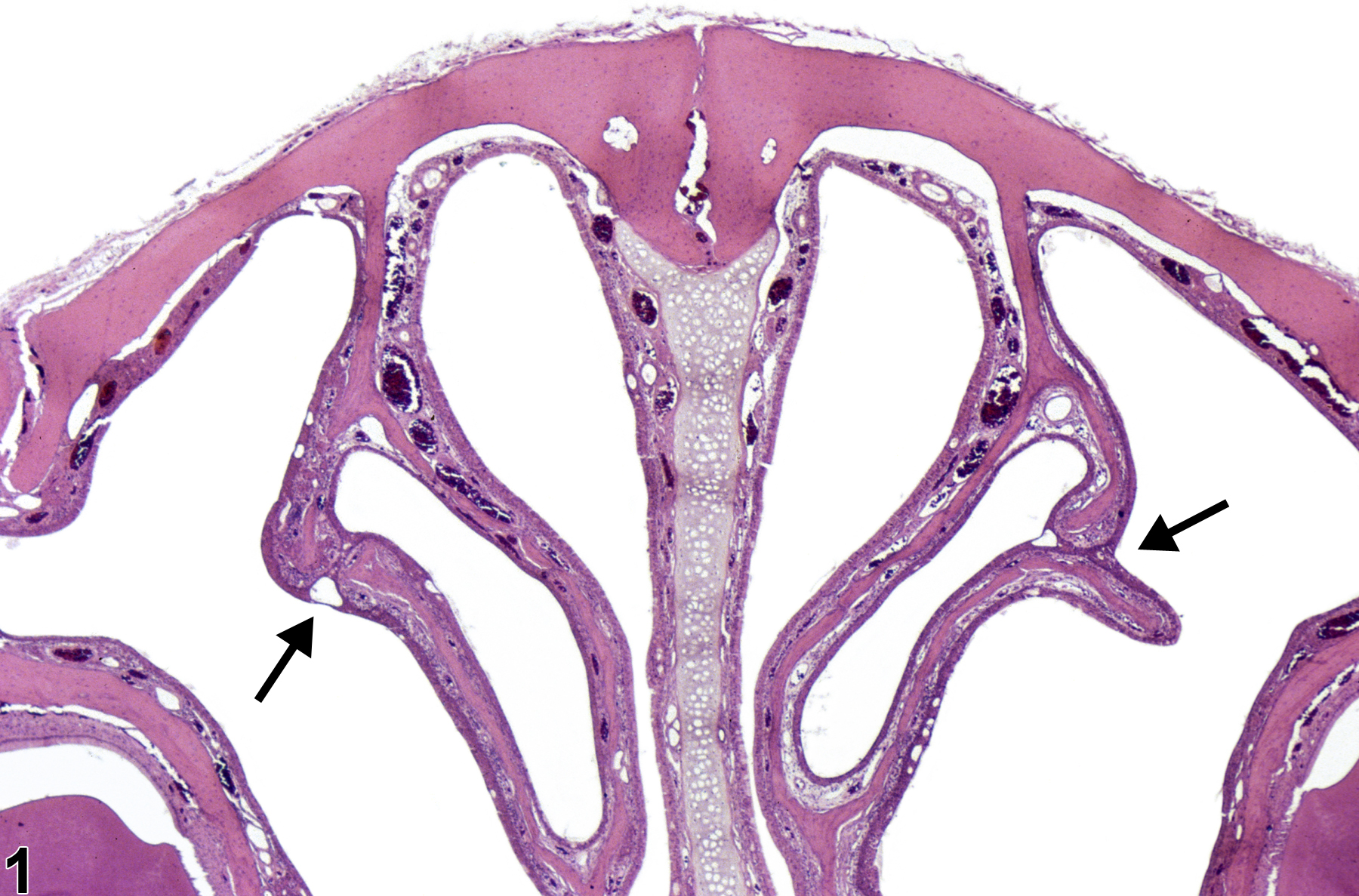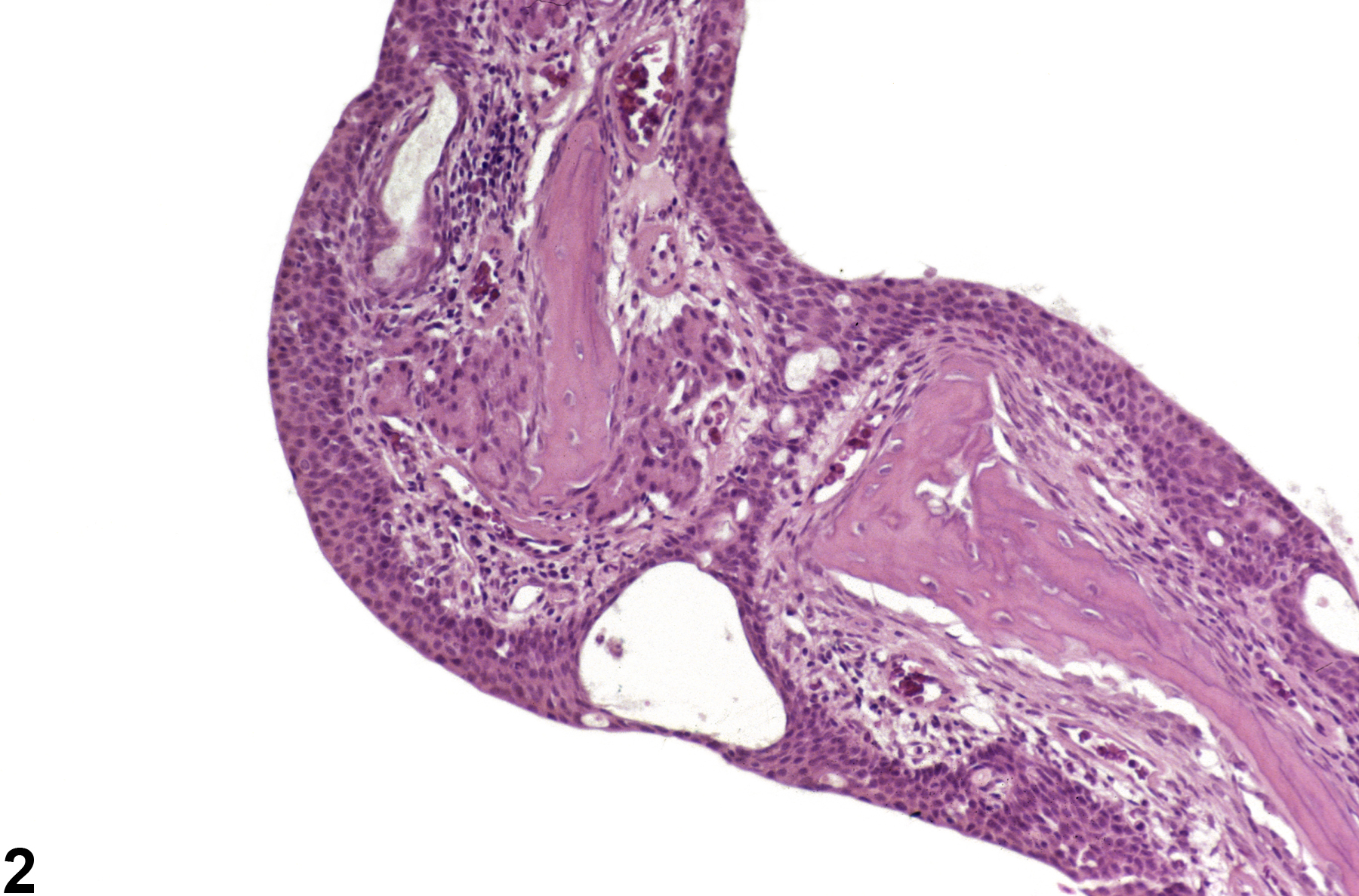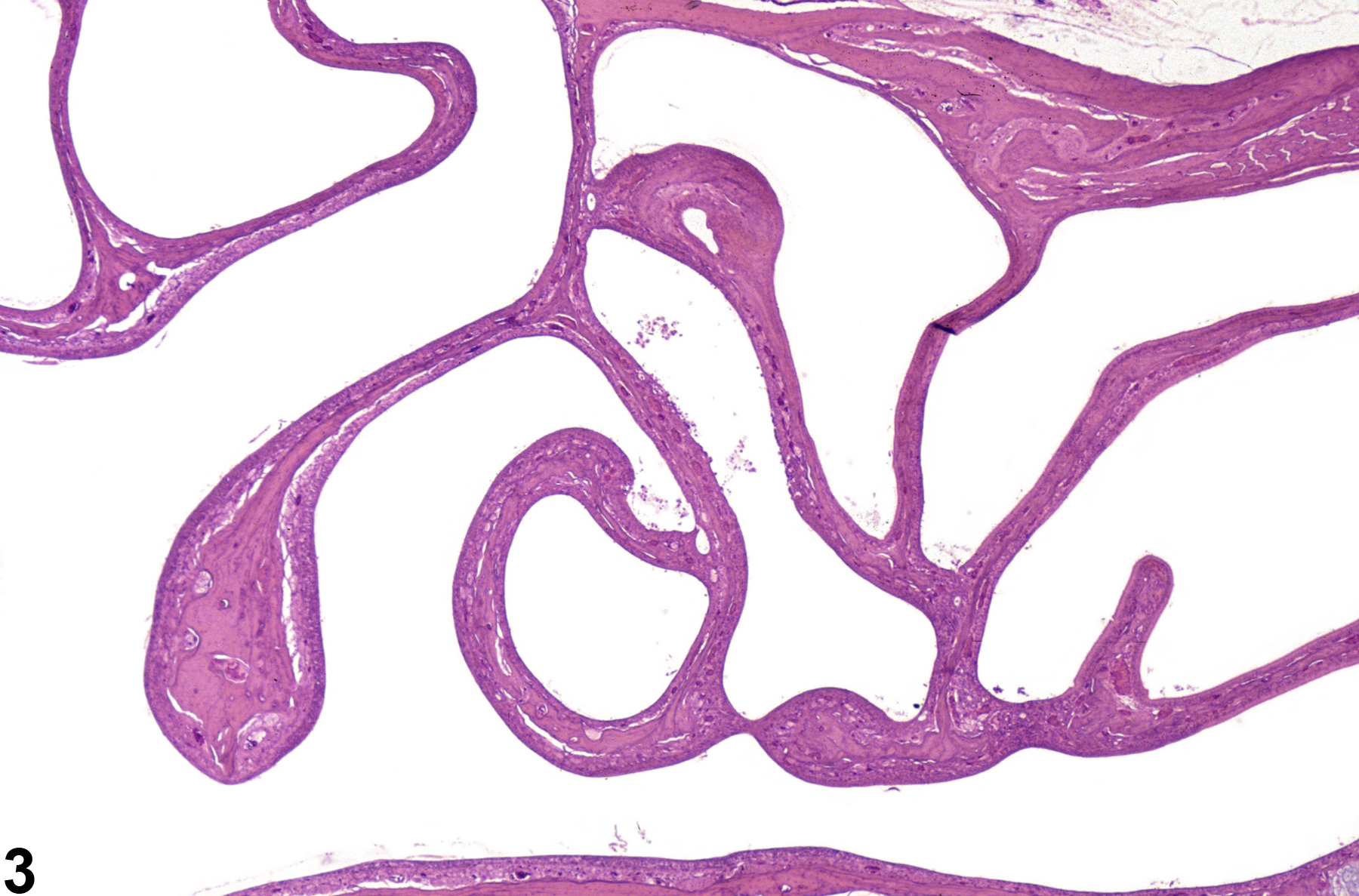Respiratory System
Nose, Turbinate - Synechia
Narrative
Turbinate synechia is diagnosed when there is adhesion of one turbinate to another turbinate (Figure 1, Figure 2, and Figure 3), to another part of the same turbinate, to the lateral wall (Figure 4), or, less commonly, to the nasal septum. Synechia is typically a sequela to chronic nasal lesions with epithelial ulceration or other mucosal inflammatory, degenerative/necrotic, regenerative/hyperplastic, or metaplastic lesions. Most synechiae tend to involve the maxilloturbinates and nasoturbinates, but synechia of the ethmoid turbinates does occur.
Synechiae are almost never seen in control animals and can be an indicator of the chronicity of necrotic, ulcerative, or inflammatory epithelial lesions and should therefore be diagnosed whenever they are observed. Synechiae should not be graded. Any accompanying lesions, such as inflammation, fibrosis, or epithelial ulceration, degeneration, or necrosis, should be diagnosed separately.
Boorman GA, Morgan KT, Uraih LC. 1990. Nose, larynx, and trachea. In: Pathology of the Fischer Rat: Reference and Atlas (Boorman GA, Eustis SL, Elwell MR, eds). Academic Press, San Diego, 315-337.
Herbert RA, Leninger JR. 1999. Nose, larynx, and trachea. In: Pathology of the Mouse: Reference and Atlas (Maronpot RR, ed). Cache River Press, Vienna, IL, 259-292.
Monticello TM, Morgan KT, Uraih LC. 1990. Nonneoplastic nasal lesions in rats and mice. Environ Health Perspect 85:249-274.
Full Text: https://www.ncbi.nlm.nih.gov/pmc/articles/PMC1568333/National Toxicology Program. 1999. NTP TR-482. Toxicology and Carcinogenesis Studies of Furfuryl Alcohol (CAS No. 98-00-0) in F344/N Rats and B6C3F1 Mice (Inhalation Studies). NTP, Research Triangle Park, NC.
Abstract: https://ntp.niehs.nih.gov/go/9766
Nose, Turbinate - Synechia in a male F344/N rat from a subchronic study. There are adhesions of the tips of the nasal turbinates to each other (arrows).





